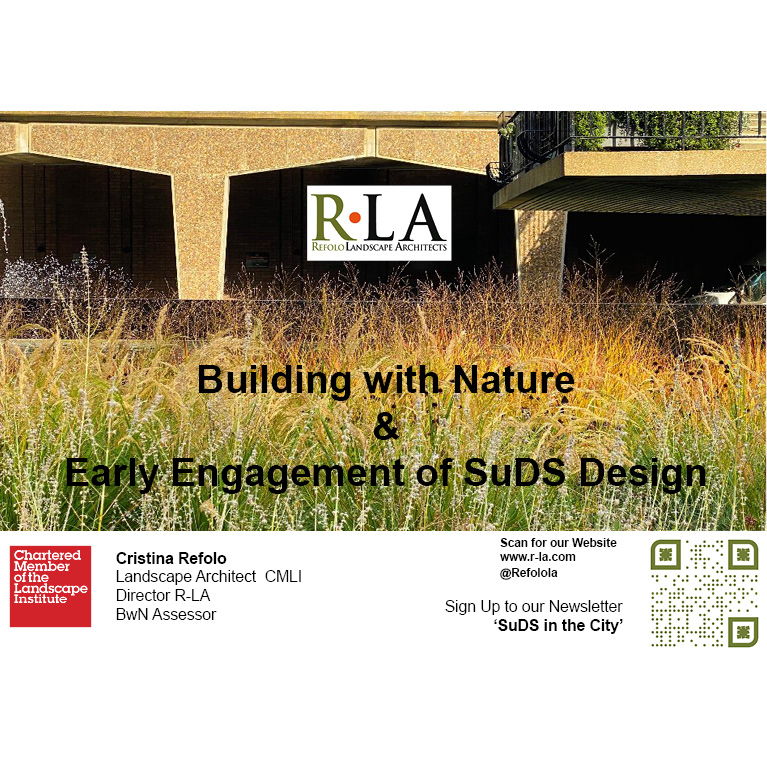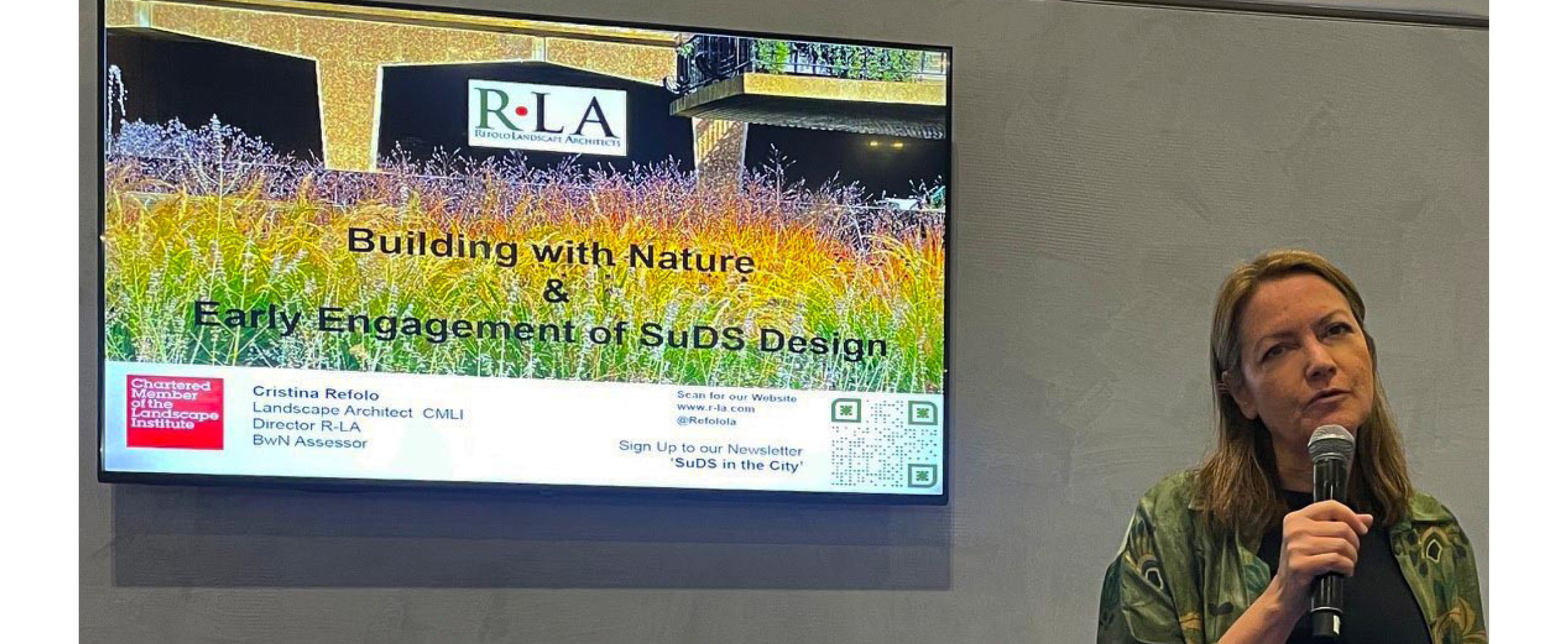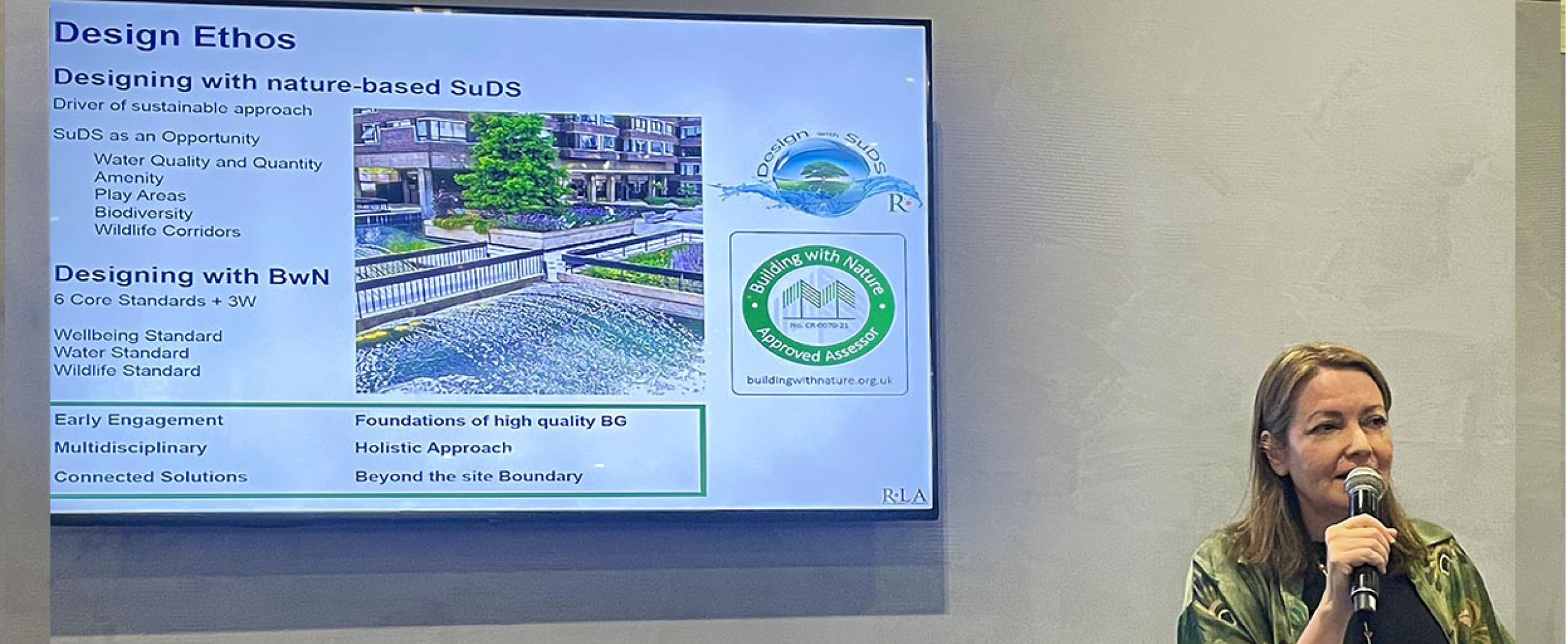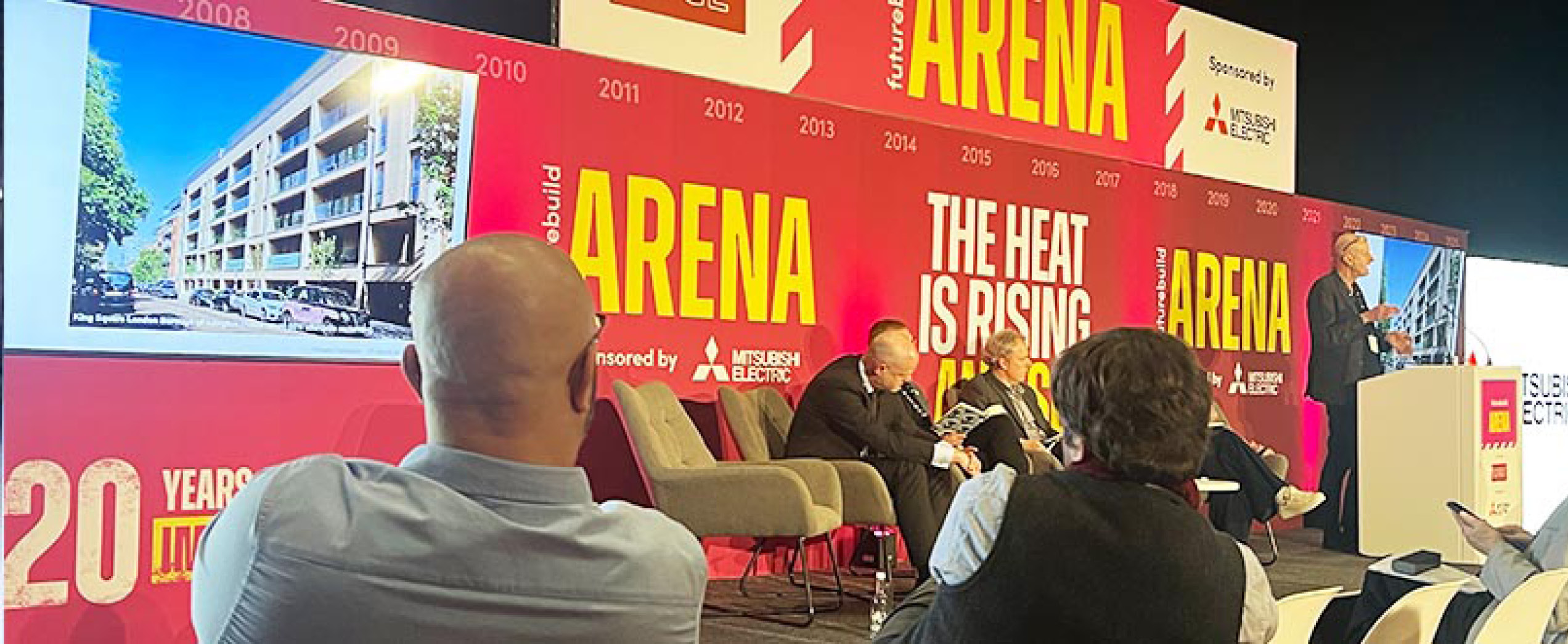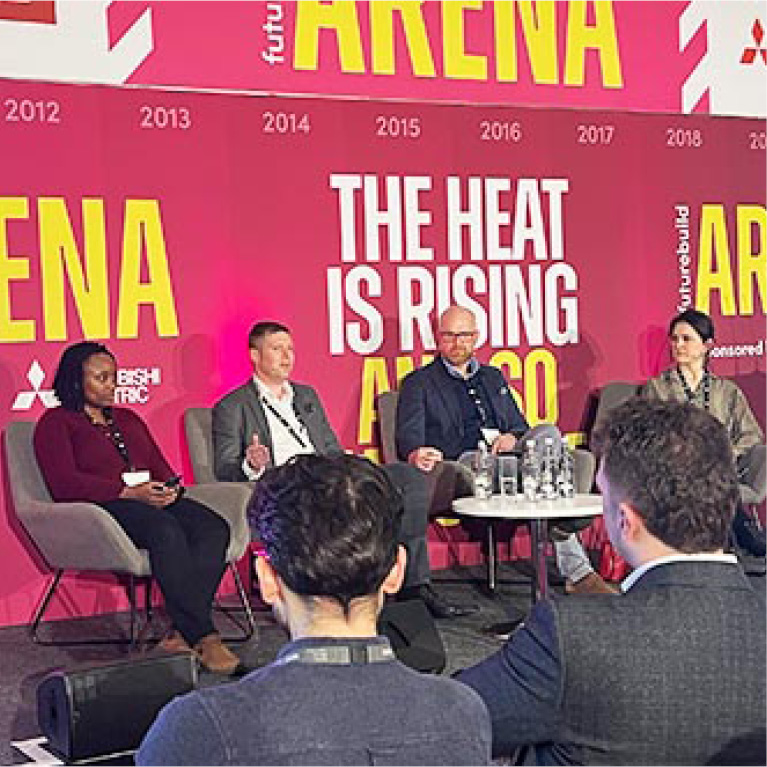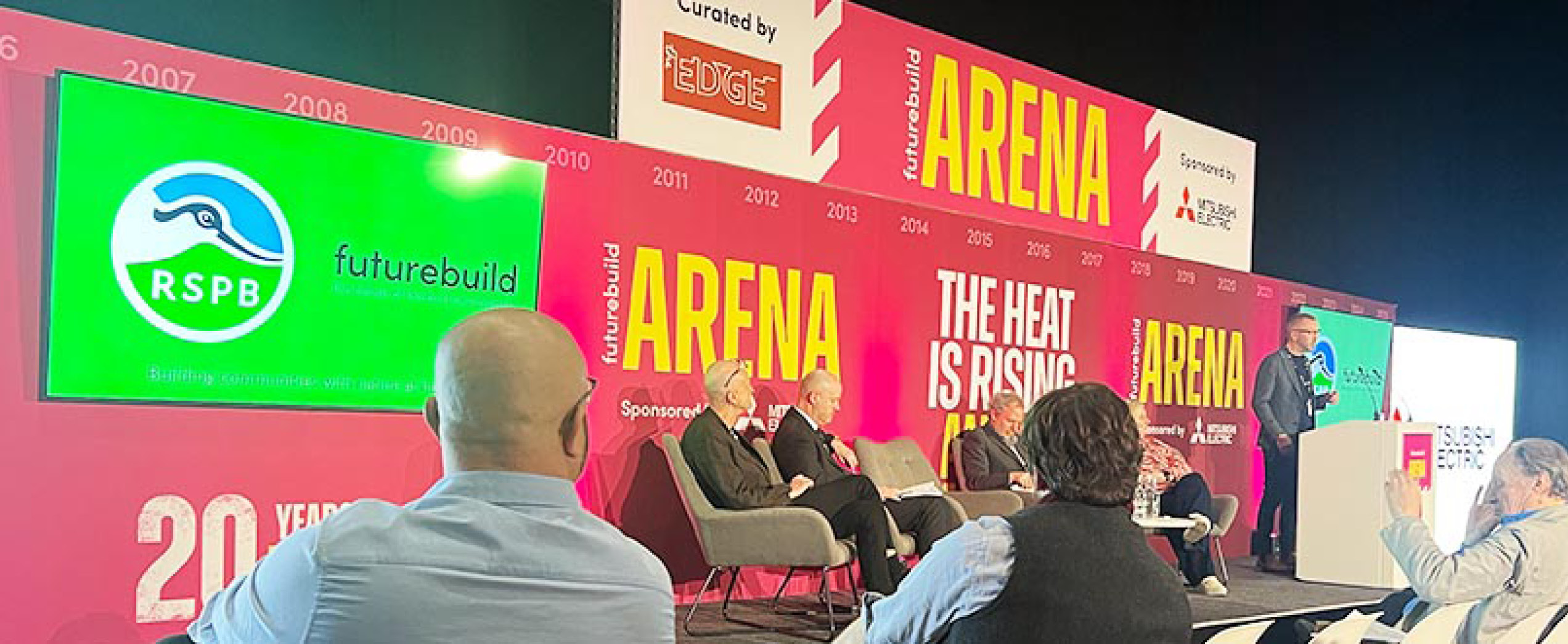futurescapes 2025
Highlights from futurescapes
Matthew Webster, Head of Environmental Sustainability at British Land talked about pockets of progress when it comes to technology and material innovation but stressed the importance of ‘skills, education, green infrastructure and collaboration’ if we want to reduce our emissions and have any chance of reaching the government’s 2050 targets.
Julie Godefroy, Head of Net Zero at the Chartered Institution of Building Services Engineers (CIBSE), who chaired the conversation, said that it shouldn’t be either growth or net zero, but that growth should pay the way so that we can achieve net zero successfully.
Yetunde Abdul, Director of Industry Transformation at UK Green Building Council agreed that collaboration across industries is key if we are to achieve something that is realistic.
When Cristina Refolo asked the panel whether there were any plans to extend the scorecard to include the landscape as well as buildings, the short answer was: not yet. The built environment sector is responsible for approximately 25% of greenhouse gas emissions; however, efforts thus far have predominantly concentrated on the decarbonisation of buildings. The areas surrounding these structures represent a considerable oversight that warrants attention. The landscape plays a vital role in reducing both embodied and whole-life carbon emissions through the implementation of low-carbon materials, the reduction of operational carbon and soil disruption, as well as the carbon offsets provided by green infrastructure. Soil disturbance plays a crucial role in carbon emissions, as soils store vast amounts of carbon in the form of organic
matter. When disturbed, this carbon can be released into the atmosphere, contributing to climate change. Obviously, there are lots of moving parts and significant gaps in government policy doesn’t help, but you don’t need to be a climate scientist to recognise the role of landscape.
After the presentations and debates had come to an end, speakers and audience members congregated to discuss issues further and exchange ideas on how to drive change in the built environment. We must remain optimistic. The solutions are within our reach, we just need to work out how to implement them in a practical and sustainable way. At R-LA, we believe there’s always a straightforward solution: turn to nature for guidance.
Contact us to see how we can help you create a truly sustainable landscape.


